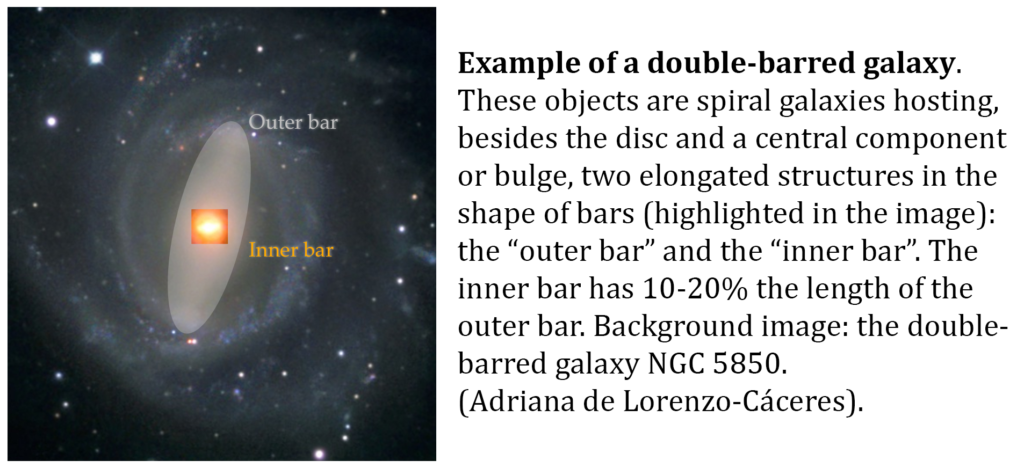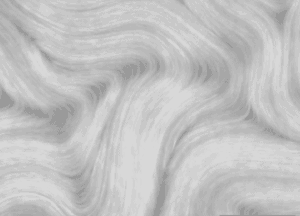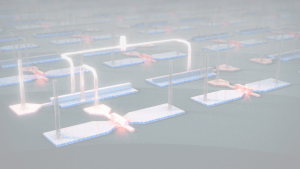If you ever wondered what astrophysicists do, the general answer would be “they try to understand how the Universe formed and what will happen to it”, while the most precise answer would be “well, it depends on the astrophysicist”. Astrophysical research is nowadays organised in various branches, each one focused on a different time and spatial scale. We have adapted our techniques to study the Universe from the nearest star, our own Sun, to the large structure where galaxies like our Milky Way are just a small contribution to the network of bright matter embedded within lots of empty space. We cannot bring the subjects of study into the lab but we can dissect them inside our computers, either with data from telescopes or with numerical simulations. Physics, Maths, and Chemistry are wisely combined to retrieve as much information as we can. Every single piece of the big puzzle of the Universe needs to be understood in order to achieve the global picture: the history of matter and life from the Big-Bang to the far future. Unravelling where we come from and how it is possible that we are here is a fundamental problem that lies at the bottom of every human’s mind, thus motivating philosophers and scientists since the earliest ages.
Extragalactic Astrophysics is the branch dedicated to the understanding of galaxies beyond our Milky Way: why and how they form, why and how they look like, why and how they develop and interact, and why and how they die. We still do not fully understand the evolutionary processes driving the lifetimes of the zoo of galaxies that populate the Universe. Galaxies may be isolated, or in groups or clusters; they may appear as pure spheroids or discs, or include a variety of structures; they may be forming stars violently or passing quietly through their lives; and the many other properties that we are progressively discovering.
The widely-known picture of a galaxy shows a central, round component (the “bulge”) surrounded by a thin disc of stars (the “disc”). Spiral arms are usually shown embedded in the disc component as well, thus the “traditional” picture of a galaxy we all have in mind. And galaxies like that do exist indeed although they represent just a fraction of all the galaxies found in the Universe. For many people it may be surprising the fact that lots of galaxies have an additional, elongated structure with the shape of a bar, made of the same composition than the rest of the galaxy, i.e., stars, gas, and dust. This “bar” is present in at least 60% of all the disc galaxies that have been observed so far, giving them the morphological classification of “barred galaxies”. Bars are therefore very common and so is it our home galaxy, the Milky Way… which is a barred galaxy as well!

If the presence of a bar in a galaxy may be shocking, the fact that some galaxies contain not only one but two bars in them is overwhelming. “Double-barred galaxies” were first observed in the mid-late 1990’s, and since then astronomers have confirmed the presence of two bars in at least 50 nearby galaxies. This represents already a 20% of all the disc galaxies that live close to the Milky Way. Expectations are, however, that this fraction will increase in the future as our detection capability improves with new instrumentation, telescopes, and analysis techniques. The reason for this prediction is that, when two bars coexist in a galaxy, one of them (the “inner bar”) is usually very small and therefore difficult to detect.
Double-barred galaxies might be playing a major role in the evolution of the Universe. Galaxies usually show some kind of “axisymmetry” (i.e., circular or rotational symmetry, like a disc itself). The presence of a non-axisymmetric structure such as the bar has great implications for the evolution of the galaxy. Bars can transport material (gas and stars) along them inwards and outwards, and this process is even more efficient when two bars are present, the consequences being that new stars are formed, the shape of the whole galaxy changes, and the central black hole is fed. We need to quantify how much the inner bars are responsible for all these processes and, therefore, to find out if they are key elements for the evolution of galaxies. But double-barred galaxies are structurally complex, with many components coexisting and overlapping. Observing these objects with enough accuracy to perform a detailed study is time-consuming, and state-of-the-art tools are needed to analyse them.

Unfortunately there are not final answers yet: research in Extragalactic Astrophysics is happening now and there are scientists analysing data from double-barred galaxies in their computers while you are reading this post. There has been a lot of exciting progress in the last five-ten years though, thanks to the more powerful instruments that are allowing to obtain better data from complex double-barred galaxies. We know now that the big bar (“outer bar”) is formed first. Gas then flows inwards through this bar and accumulates in the centre, where new stars are born. The inner bar is shaped with these young stars and, as it happened with the outer bar, there is a gas inflow through the inner bar as well. Surprisingly, preliminary results indicate that the consequences of this latest process are mild and it does not have a noticeable effect over galaxy evolution as a whole. The fact of having two non-axisymmetric structures in a galaxy is not affecting it in a major way!
The fun has just started: new questions arise, such as the possibility of all the barred galaxies developing an inner bar at some point of their lives, or if the bars may disappear at a certain stage. Step by step, star by star, galaxy by galaxy… we will end up reproducing the whole movie of the Universe!
By Dr. Adriana de Lorenzo-Cáceres Rodríguez. School of Physics and Astronomy. University of St Andrews, Scotland, UK.






